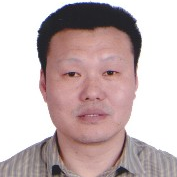Water-Energy-Sustainability Nexus
A special issue of Applied Sciences (ISSN 2076-3417). This special issue belongs to the section "Environmental Sciences".
Deadline for manuscript submissions: closed (31 December 2019) | Viewed by 6333
Special Issue Editors
Interests: anaerobic digestion; biohydrogen production; granulation; immobilization; organic waste recycling
2. Institute of Chemistry, BioScience, and Environmental Engineering, Faculty of Science and Technology, University of Stavanger, 4021 Stavanger, Norway
Interests: bioenergy production from waste/biomass; biomass (lignocellulose/lignin) valorization to value added chemicals; environmental biotechnology/remediation; biosynthesis of nanoparticles and applications
Interests: sponge city; urban hydrology; water resource management; water environment and aquatic ecosystem restoration
Special Issues, Collections and Topics in MDPI journals
Interests: sustainable urban water development; sustainable urban water systems; planning and design; low-impact development techniques; climate change; urban water management; eco-restoration
Special Issues, Collections and Topics in MDPI journals
Special Issue Information
Dear Colleagues,
The major theme of the conference is the “Water–Energy–Sustainability Nexus”. The water, energy, and food security nexus means that water security, energy security, and food security are inextricably linked and that actions in any one area usually have an impact in one or both of the others. As the world population approaches 8 billion, with increasing demands for basic services and a growing desire for higher living standards, the need for more conscious stewardship of the vital resources required to achieve these services and desires has become both more obvious and urgent. While the focus of this Special Issue is the water–energy–sustainability nexus, authors are welcome and encouraged to submit their papers on topics such as, but not limited to, the following:
- The development of new alternative fuels
- Biofuel processing technologies
- Novel biofuel feedstocks
- New perspectives of alternative fuels
- New developments in microalgae for biofuel production
- Biohydrogen, biobutanol, bioethanol, and other biofuel production techniques
- Physical and chemical properties of alternative fuels and their improvement
- Predicting the properties of alternative fuel blends
- The modelling and experimental investigation of engine performance and the emission of alternative fuels
- Waste to energy
- Wastewater treatment
- Bioelectorchemical systems
- Wind and solar energy
- Photovolatics and their applications
- Novel nano-catalysts for biodiesel production
- Socioeconomic and environmental impacts of alternative fuels
- Biomass industries’ performance
- Future challenges and directions, and the economics, of alternative fuels
- Biofouling control
- Sponge cities/water-sensitive cities
- LID technologies
- Urban water management in the control of water and the reuse of water resources
- Watershed management
- Nanotechnology for remediation
- Sustainable development in water and energy use
- Novel membrane processes for biofuels, energy, and environment applications
Prof. Dr. Sang-Hyoun Kim
Prof. Dr. Gopalakrishnan Kumar
Prof. Dr. Dafang Fu
Prof. Dr. Rajendra Prasad Singh
Guest Editors
Manuscript Submission Information
Manuscripts should be submitted online at www.mdpi.com by registering and logging in to this website. Once you are registered, click here to go to the submission form. Manuscripts can be submitted until the deadline. All submissions that pass pre-check are peer-reviewed. Accepted papers will be published continuously in the journal (as soon as accepted) and will be listed together on the special issue website. Research articles, review articles as well as short communications are invited. For planned papers, a title and short abstract (about 100 words) can be sent to the Editorial Office for announcement on this website.
Submitted manuscripts should not have been published previously, nor be under consideration for publication elsewhere (except conference proceedings papers). All manuscripts are thoroughly refereed through a single-blind peer-review process. A guide for authors and other relevant information for submission of manuscripts is available on the Instructions for Authors page. Applied Sciences is an international peer-reviewed open access semimonthly journal published by MDPI.
Please visit the Instructions for Authors page before submitting a manuscript. The Article Processing Charge (APC) for publication in this open access journal is 2400 CHF (Swiss Francs). Submitted papers should be well formatted and use good English. Authors may use MDPI's English editing service prior to publication or during author revisions.
Keywords
- Biotechnology
- Nanobiotechnology
- Sponge cities
- Sustainable urban development
- Bioenergy, biofuel








